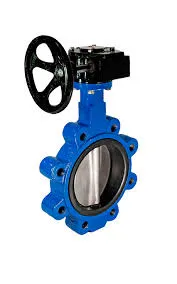10 月 . 19, 2024 03:26 Back to list
single sphere type rubber joint
Understanding Single Sphere Type Rubber Joints A Comprehensive Overview
Rubber joints, specifically single sphere type rubber joints, play a pivotal role in various industrial applications. These flexible connectors are designed to absorb vibrations, accommodate misalignments, and provide a cushioning effect in piping systems. As integral components in the engineering and construction fields, they effectively enhance the longevity and performance of systems that involve the transportation of fluids, gases, and other materials.
Construction and Design
The single sphere type rubber joint is characterized by its single, spherical shape, which distinguishes it from other joint designs. Typically constructed from high-quality elastomers, such as natural rubber, neoprene, or EPDM, these joints offer excellent elasticity and resistance to wear and tear. The rubber material is reinforced with textile or steel inserts that add tensile strength and enhance its durability. The spherical design allows for multi-directional movement, effectively accommodating axial, lateral, and angular misalignments without compromising the integrity of the joint.
Benefits of Single Sphere Type Rubber Joints
1. Vibration Dampening One of the most critical advantages of single sphere type rubber joints is their ability to absorb vibrations. In many industrial processes, machinery and equipment generate significant amounts of vibration, which can lead to structural damage over time. The rubber joint minimizes this impact, protecting pipelines and connecting machinery from the harmful effects of vibrational fatigue.
2. Ease of Installation These joints are relatively easy to install compared to rigid connections. Their flexible nature allows them to be positioned without the need for extensive modifications to piping systems. This flexibility can lead to reduced labor costs and shorter installation times, making them a preferred choice for many engineers.
single sphere type rubber joint

3. Misalignment Compensation The single sphere design permits a higher degree of tolerance for misalignments in the piping system. Whether the misalignment occurs due to ground settlement, thermal expansion, or other factors, the rubber joint can accommodate these changes, ensuring a continuous flow within the system without leaks or failures.
4. Corrosion Resistance Since many industrial environments expose piping systems to corrosive substances, the materials used in single sphere rubber joints are specifically chosen for their resistance to chemical degradation. This resistance extends the lifespan of the joint and reduces the need for frequent replacements, leading to more straightforward maintenance practices.
Applications
Single sphere type rubber joints find applications across a myriad of industries — from wastewater treatment plants to HVAC systems, and even in petrochemical processing. They are often used in pipelines for transporting water, chemicals, slurries, or air, where flexibility and durability are crucial.
In HVAC systems, these joints serve to connect ductwork, allowing for movement and expansion due to temperature changes while minimizing noise transmission. In the petrochemical industry, they help navigate the challenges of fluctuating pressure and temperature conditions, ensuring safety and efficiency in fluid transfer.
Conclusion
In summary, single sphere type rubber joints are essential components in modern engineering and industrial practices. Their ability to absorb vibrations, accommodate misalignments, and resist corrosion make them invaluable in maintaining the functionality and longevity of various systems. As industries continue to evolve and demand more reliable and efficient solutions, the role of such rubber joints will undoubtedly remain significant. Understanding their features and benefits can empower engineers and technicians to make informed decisions when designing and maintaining piping systems, ultimately contributing to enhanced performance and safety.
Share
-
Understanding the Differences Between Wafer Type Butterfly Valve and Lugged Butterfly ValveNewsOct.25,2024
-
The Efficiency of Wafer Type Butterfly Valve and Lugged Butterfly ValveNewsOct.25,2024
-
The Ultimate Guide to Industrial Swing Check Valve: Performance, Installation, and MaintenanceNewsOct.25,2024
-
Superior Performance with Industrial Swing Check Valve: The Essential Valve for Any SystemNewsOct.25,2024
-
Industrial Swing Check Valve: The Ideal Solution for Flow ControlNewsOct.25,2024
-
You Need to Know About Industrial Swing Check Valve: Functionality, Scope, and PerformanceNewsOct.25,2024